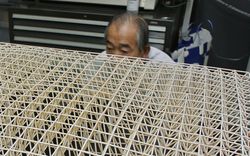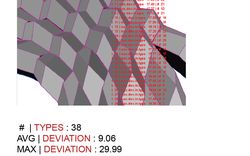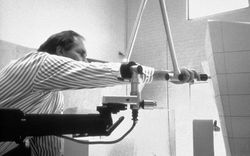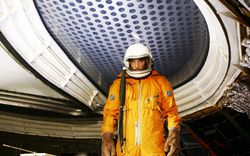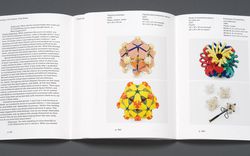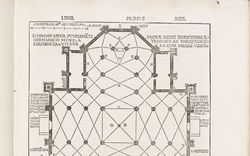Archaeology of the Digital: Complexity and Convention is the third exhibition related to the development of a strategy for collecting and preserving digital archives at the CCA. The Archaeology of the Digital program comprises twenty-five projects for which digital materials are integral to an understanding of the design process. For projects included in the first two exhibitions, many of the native-digital files had been lost: hardware to open files had ceased to exist, data storage formats had become obsolete, and custom or commercial software programs were no longer compatible with archived data. In this exhibition the inverse is true; there is a vast quantity of digital material for many projects and the hardware and software used more than a decade ago is often still operational. The material shows how a digital approach to design proved that buildings could be delivered in a functional, timely, and fiscally responsible way while allowing for more complexity, ingenuity, and innovation than would have previously been possible. Indicating a diversity of practices and developed at a wide range of scales, the fifteen projects included in this exhibition represent the period during which digital technology moved from experiment to acceptance.
Read more
Rather than presenting individual projects that follow singular visions of the digital, as was the case with the two previous iterations, this exhibition shows commonalities, hybridizations, and cross-pollinations of the digital medium and methods. Shared approaches and tools across projects include the creation of high-fidelity 3D models to coordinate across scales and between teams; digital information supplied directly to computer-numerical-controlled (CNC) machines for fabrication, construction, and assembly ; 3D printing for model building; data-visualization tools using simulated physics for the optimization of structure, energy, and infrastructure systems; conflict detection software to identify areas needing coordination; and the use of algorithms, programs, and scripts for the procedural modelling of form, structure, fenestration, shading, and organizational diagrams.
To reflect the combination and commingling of these methods in the selected projects, the exhibition galleries are organized according to five themes: High-Fidelity 3D, Topology and Topography, Photorealism, Data, and Structure and Cladding. The fifteen projects are dissected into their constituent digital contents according to these themes and are compared and contrasted with one another. The shared approaches to the integration of digital technology attest to the transformation of the design process and of the role of the architect at a moment when architecture crossed a digital threshold after which many of these pioneering technologies became standard.
–Greg Lynn
The exhibition includes material from the following projects: Erasmus Bridge (Rotterdam, 1990–1996) by Van Berkel & Bos Architects; Chemnitz Stadium (Chemnitz, 1995) by Peter Kulka with Ulrich Königs; O/K Apartment (New York, 1995–1997) by Kolatan/Mac Donald Studio; Yokohama International Port Terminal (Yokohama, 1995–2002) by Foreign Office Architects; Interrupted Projections (Tokyo, 1996) by Neil M. Denari Architects; Kansai National Diet Library (Kyoto, 1996) by Reiser + Umemoto; Hypo Alpe-Adria Center (Klagenfurt, Austria, 1996–2002) by Morphosis; Jyväskylä Music and Arts Center (Jyväskylä, Finland, 1997) by OCEAN North; Witte Arts Center (Green Bay, USA, 2000) by Office dA; Phaeno Science Centre (Wolfsburg, Germany, 2000–2005) by Zaha Hadid Architects; Villa Nurbs (Empuriabrava, Spain, 2000–2015) by Cloud 9; Eyebeam Atelier Museum (New York, 2001) by Preston Scott Cohen; Carbon Tower (prototype, 2001) by Testa & Weiser; BMW Welt (Munich, 2001–2007) by Coop Himmelb(l)au; and Water Flux (Évolène, Switzerland, 2002–2010) by R&Sie(n).
Curator: Greg Lynn, Los Angeles.
Curatorial team: Martina Amato, Irene Chin, Viviane Ehrensberger, and Stefan Sauter, CCA.
Exhibition design: Jonathan Hares, Lausanne.






















































